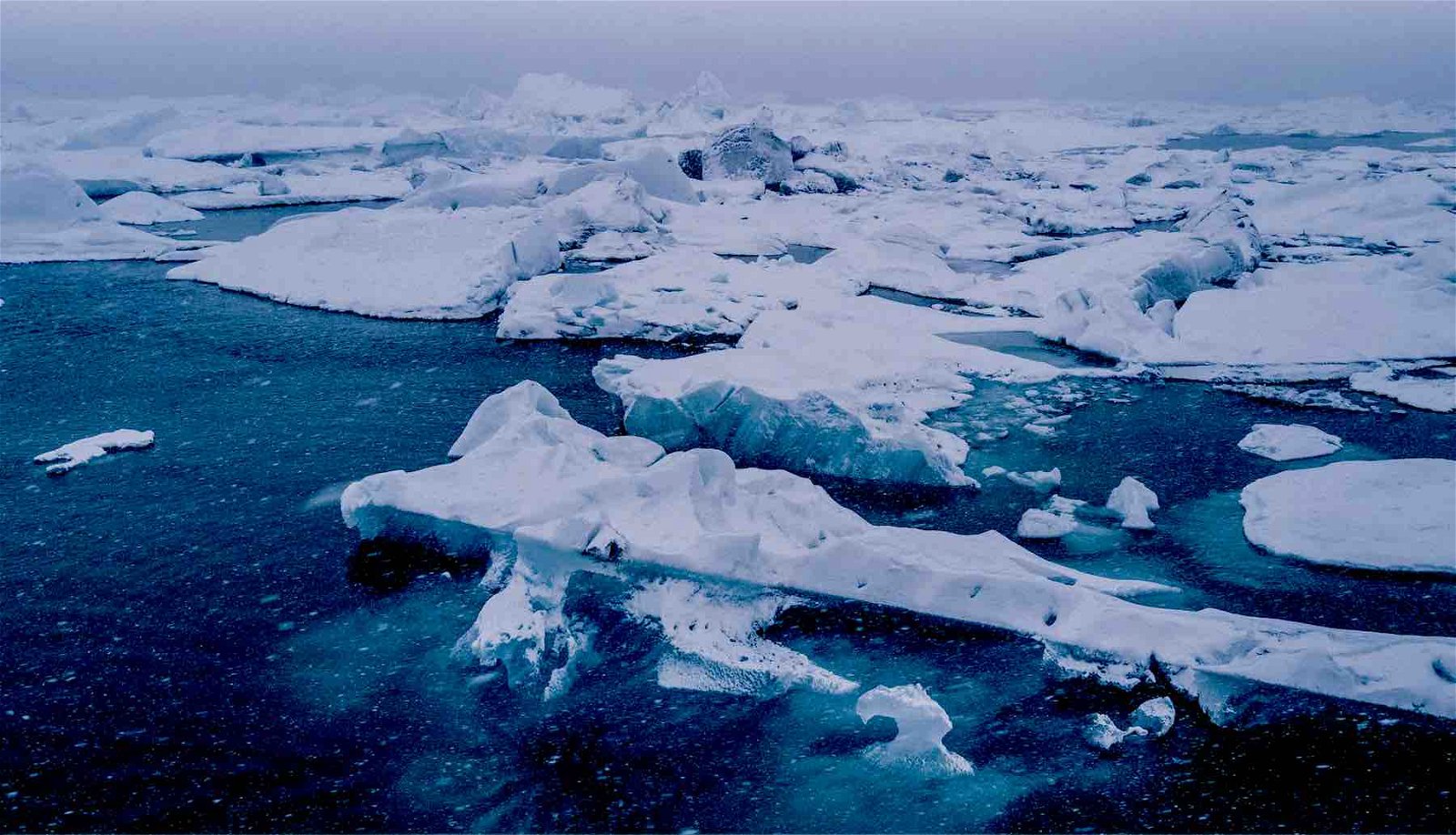Researchers investigating how and when the first people arrived in North America are proposing that ancient travelers may have followed “ice highways” across the Pacific, challenging past theories that human migrations to the continent were made exclusively through an ice-free corridor by land.
The question of when the earliest arrivals to North America occurred has remained one of the most contentious debates in modern archaeology. Evidence of human occupation before 13,000 years ago, once deemed controversial by some archaeologists, has mounted over the last several decades and increasingly supported the arrival of humans during much earlier periods.
Recent evidence that includes fossilized footprints in New Mexico that have been confirmed to date to around 23,000 years ago, as well as numerous archaeological sites that unambiguously demonstrate an earlier human presence, have caused archaeologists to consider not only when the first Americans might have arrived, but also what mode of transportation they might have had to rely on to make their way here.
Now, new research suggests that early Americans might have traveled not by land, but by sea, as they traversed sea ice accumulation along the Pacific coastline during the last glacial maximum.
The research, based on modern reconstructions of paleoclimate conditions, was presented last week at the annual meeting of the American Geophysical Union.
Paleoclimatology, which studies climate conditions from the geological past, relies on evidence in the form of climate proxies, which are past physical characteristics that are preserved and allow scientists to make indirect meteorological measurements of weather conditions prior to the beginning of modern climate recordkeeping.
In the past, it had long been supposed that humans arrived in North America no sooner than around 13,000 years ago, based on archaeological evidence associated with what became known as the Clovis culture following excavations in the early 20th century. Initially, it was supposed that the early visitors who settled and became the first Americans had likely traversed a land bridge where the Bering Strait exists today, albeit at a time when ice accumulation had receded enough to facilitate passage, but not so much that sea levels, steadily rising as glacial meltwater fed into the oceans, had swallowed the now submerged portions of the ancient landscape.
However, as mounting evidence for earlier-than-Clovis arrivals to North America began to accumulate, particularly over the last half-century, a new problem manifested: what route could these ancient people have possibly relied on to make their way here thousands of years earlier, during periods where glacial ice would likely have prevented their passage?


One solution to the problem involved what scientists call the “kelp highway,” where ancient migrations to North America might have been completed using watercraft. Under this scenario, ancient hunter-gatherers may have simply followed sources of food on their way along the edges of ancient coastlines and glaciers, eventually making their way to land and settlement in North America.
However, even this theory has seen challenges. Although no evidence of ancient watercraft that might have been used has even been located, this is to be expected, since wood and other materials these ancient boats would have been constructed from are perishable materials that would not likely have been preserved. The main issue was brought to light in 2020, when studies based on paleoclimate data determined that strong currents resulting from fresh glacial meltwater escaping into the oceans would likely have made travel by boat during this period very difficult, if not impossible.
Looking for alternatives, Summer Praetorius, a research geologist with the U.S. Geological Survey, and her colleagues began looking at climate proxies—particularly the abundances of tiny fossils of plankton that remain present in ocean sediments found along the Pacific coast. From the fossils of these tiny ocean creatures, scientists can glean a remarkable amount of information about ocean temperatures and other conditions that were occurring in the distant past.
Based on climate models, Praetorious and her colleagues found that glacial winds and reduced sea level conditions around 20,000 years ago would have resulted in ocean currents that were more than twice as strong as they are in modern times, greatly complicating the efforts of any aspiring ancient trans-Pacific sailors.
However, the models also revealed that winter sea ice would have been in great abundance along the shorelines until around 15,000 years ago, which Praetorius suggests might have been used as a “platform” for travel along shorelines, thereby allowing the passage of ancient travelers on foot, perhaps while hunting sea mammals.
Praetorius says that the current climate data she and her colleagues have examined would have allowed sea ice conditions along the Pacific coast that could facilitate such travel between 22,000 and 24,500 years ago, as well as during later periods between 14,800 and 16,400 years ago.
Intriguingly, similar ideas have been put forward in the past, but regarding potential routes ancient Europeans might have followed to reach North America across the Atlantic, rather than the Pacific.
The somewhat controversial idea was outlined by the late Smithsonian archaeologist Dennis Stanford and his colleague, Bruce A. Bradley, in their 2012 book Across Atlantic Ice: The Origin of America’s Clovis Culture, where the authors argued that similarities between American Clovis-era projectile points and paleolithic point styles found in ancient Europe from around 20,000 years ago may be suggestive of the transmission of lithic production technologies from ancient Europe to North America thousands of years earlier than the once-accepted timeline for the arrival of the first Americans.
Regarding Praetorius’s work based on climate models of the ancient Pacific coast, she and her colleagues concede that the notion of “ice highways” utilized by ancient travelers who eventually made their way into North America doesn’t rule out that some could have arrived by boat, particularly during later periods when calmer ocean currents would have made that possible.
“Nothing is off the table,” Praetorius said, adding that “We will always be surprised by ancient human ingenuity.”
Micah Hanks is the Editor-in-Chief and Co-Founder of The Debrief. He can be reached by email at micah@thedebrief.org. Follow his work at micahhanks.com and on X: @MicahHanks.

